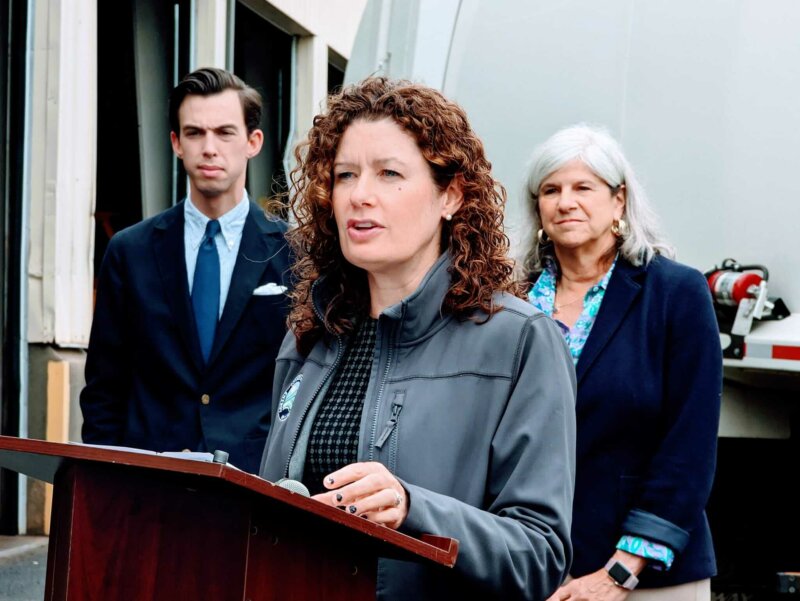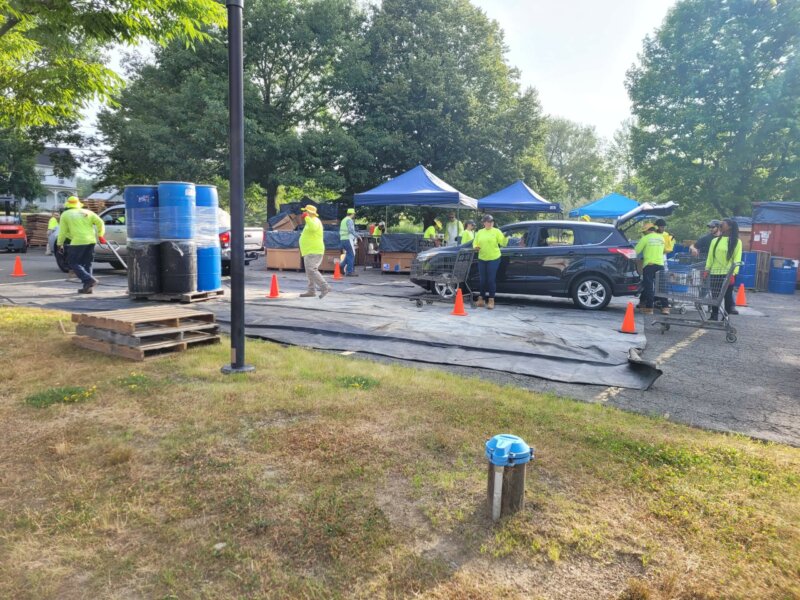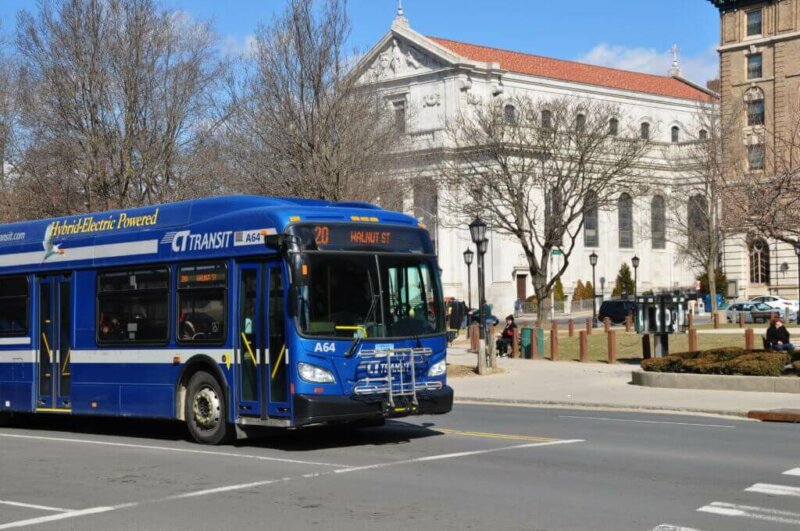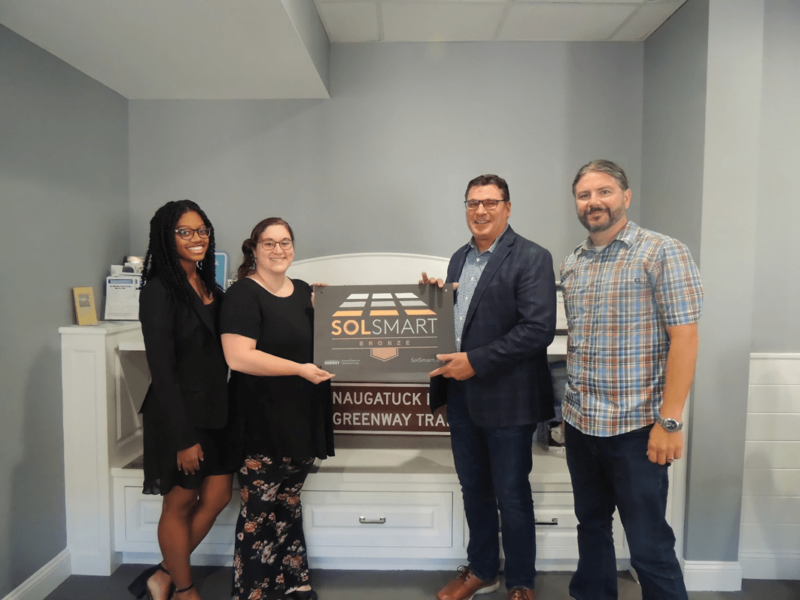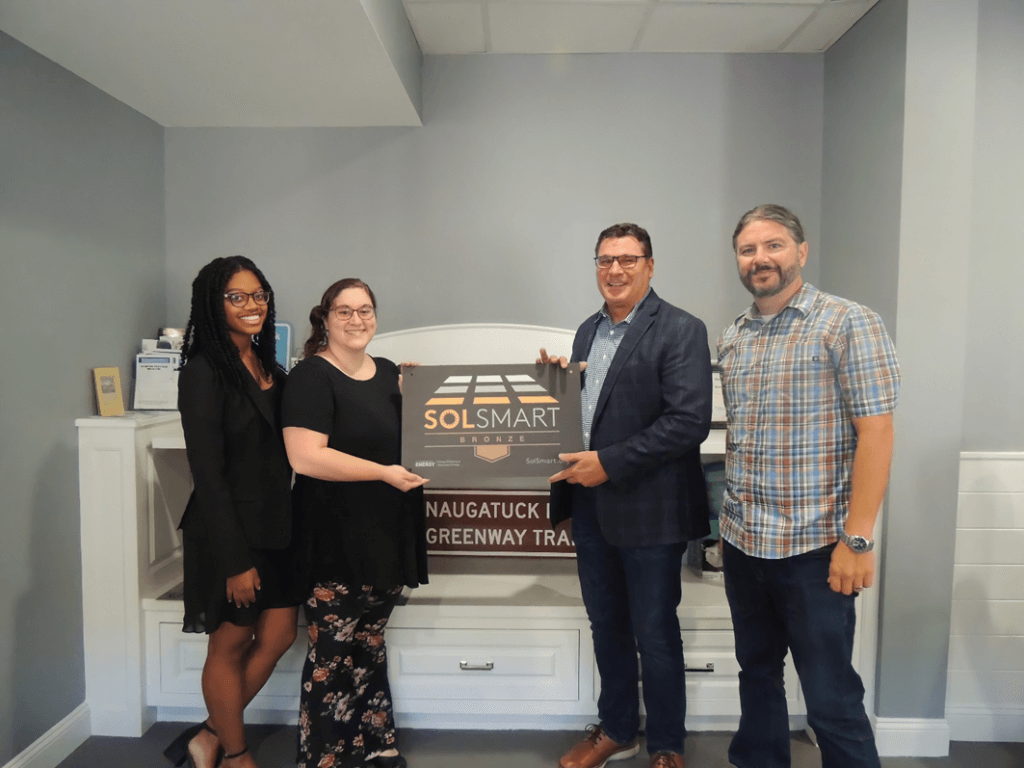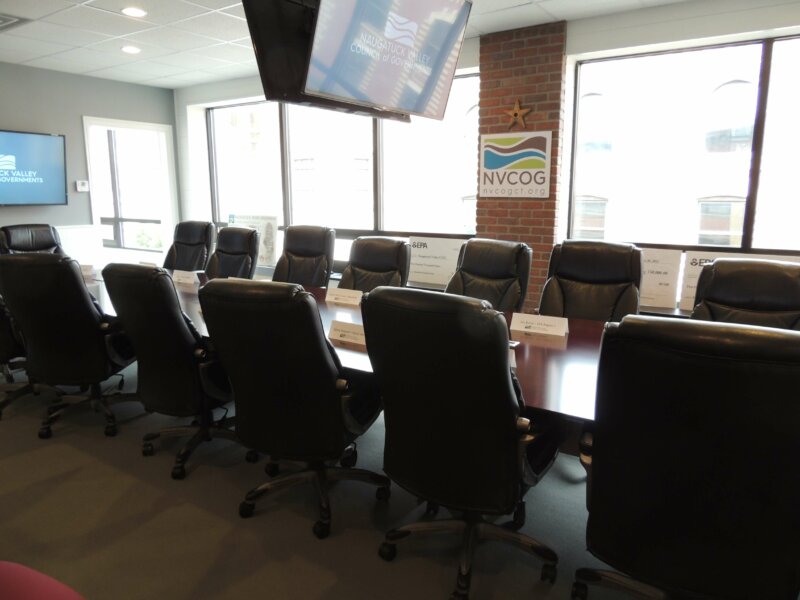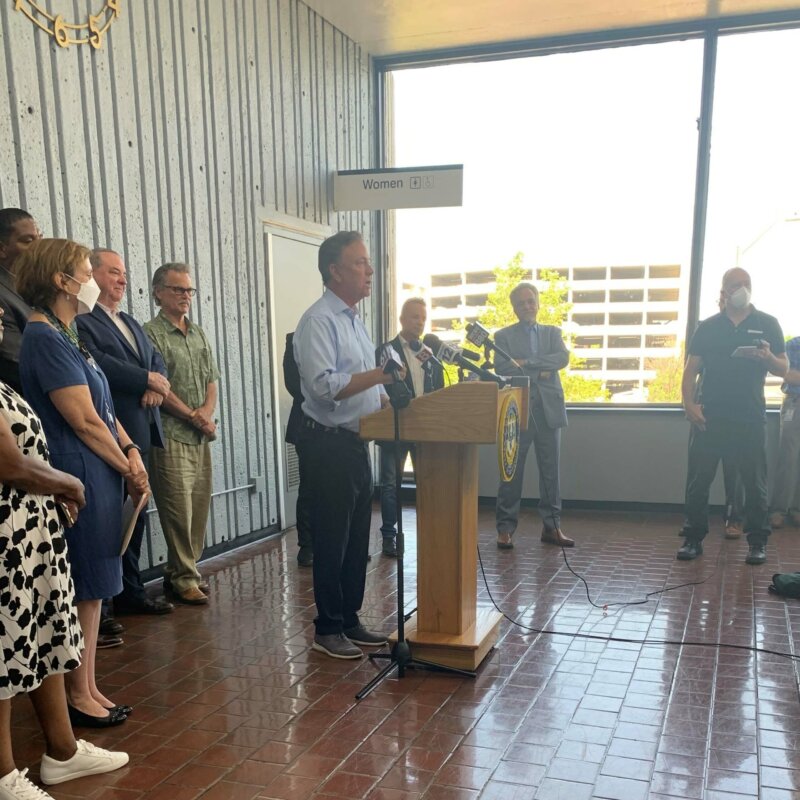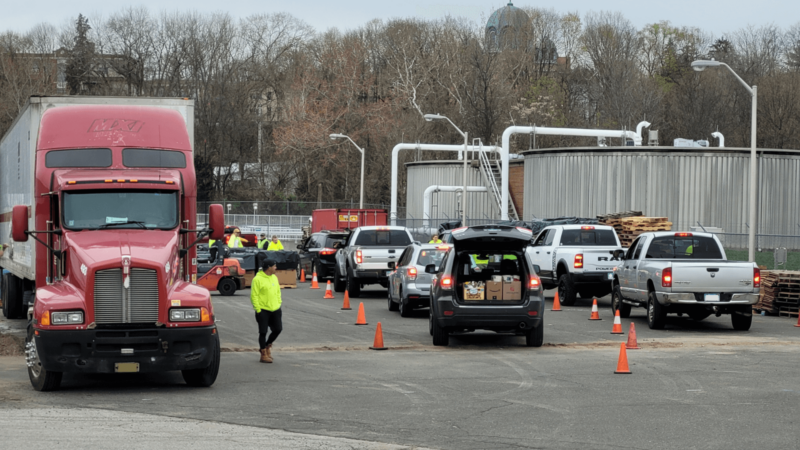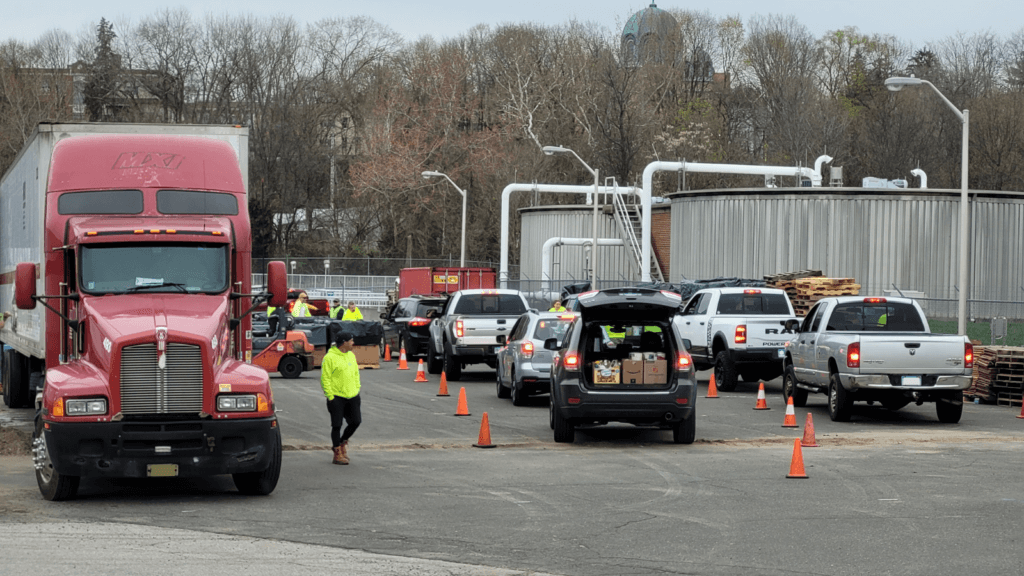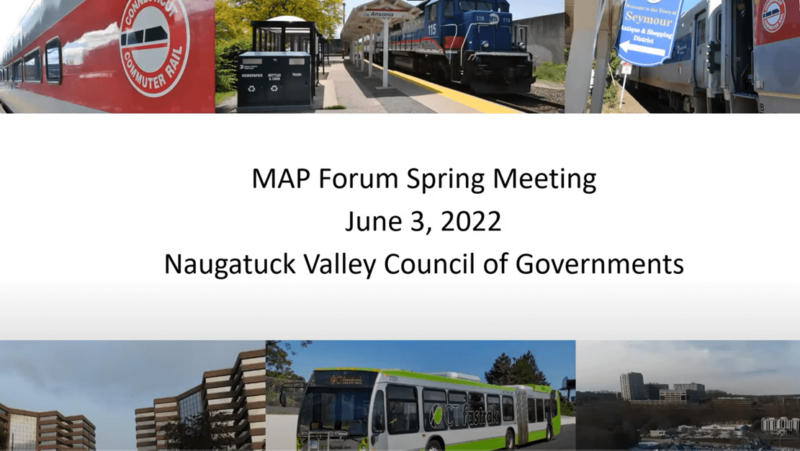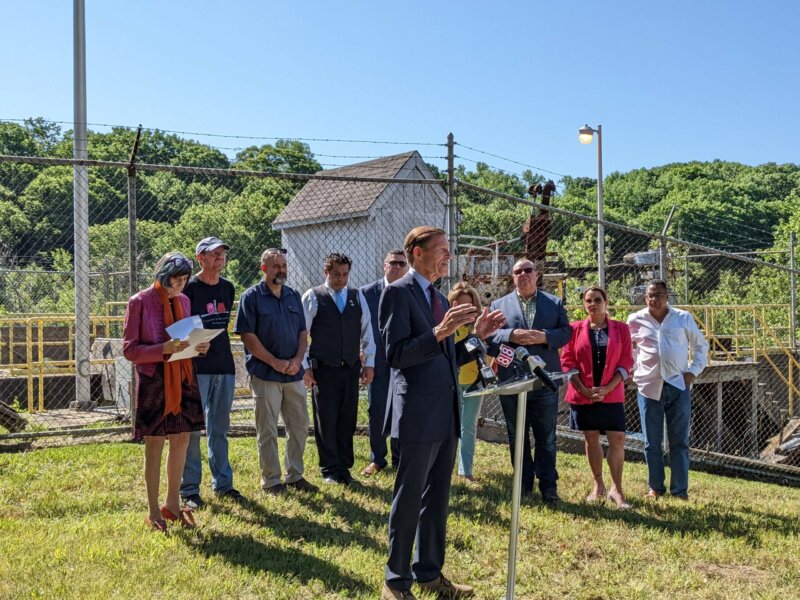(HARTFORD)-The Connecticut Department of Energy and Environmental Protection (DEEP) is pleased to announce the first round of grant awards for the Sustainable Materials Management (SMM) Grant program.The SMM grant program supports the development of food scrap collection and unit-based pricing pilot programs, the type of waste diversion efforts recommended by the Connecticut Coalition for Sustainable Materials Management (CCSMM),a coalition of over 100 municipalities across the state working on ways to reduce waste and increase reuse and recycling.Fifteen municipalities and three regional groups have been notified of the Department’s intent to award funds for their pilots.
Many of the SMM grant applicants modeled their pilots off a successful pilot program the City of Meriden launched earlier this year with DEEP SMART grant program funding.The Meriden pilot was a 4-month, 1,000-household test to prove the feasibility of co-collection of food and household waste and the ease-of use for residents; the pilot diverted over 13 tons of food scraps from the waste stream. Meriden households used two special bags during their pilot, one bag for food scraps and another bag for trash, both bags were collected from the same bin, a process called co-collection. The bags were separated by type, and the food scrap bags were transported to Quantum Biopower in Southington, where the organic waste was transformed into renewable energy (biogas). The Meriden project received broad interest from residents, including those not part of the pilot.
According to Connecticut’s most recent waste characterization study, 41% of what residents throw away is organic material—e.g., food scraps, and yard waste—that can be composted, converted to energy through anaerobic digestion or processed into animal feed.Food scraps alone represent 22% of residential trash. Food scraps are one of the heavier materials regularly thrown away at the residential level and removing them from the waste stream reduces the costs of disposal as municipalities pay by weight.
“We are excited to support our municipal partners implementing innovative waste diversion practices that can reduce their waste management costs and the environmental impact of waste management in Connecticut and beyond,” said DEEP Commissioner Katie Dykes. “The municipalities piloting these programs will lead the state in modernizing our waste management practices, a key to solving the state’s waste disposal crisis. I’m grateful to Governor Lamont and the Connecticut General Assembly for authorizing funding for this unprecedented investment in sustainable waste solutions.”
“The Sustainable Materials Management (SMM) Grant program will help municipalities and regions operationalize several initiatives that were developed by the Connecticut Coalition for Sustainable Materials Management,”Laura Francis,Deputy Director of theSouth Central Regional Council of Governments and former Co-Chair of CCSMM. “The level of participation in this grant program is remarkable and demonstrates the commitment that our communities and COGs have to finding solutions to the current waste crisis. I thank Commissioner Dykes and her team for the partnership we have developed between all levels of government. Together we can make a difference.”
“On behalf of the HRRA communities receiving the grant (Bethel, Kent and Newtown) I’m thrilled and grateful we now have funding to create and implement waste reduction programs that are truly impactful,” said Jennifer Heaton-Jones, Executive Director of the Housatonic Resources Recovery Authority. “I’m eager to show the rest of the region and the State of Connecticut that these innovative programs that promote Unit Based Pricing and Food Waste diversion can offset disposal tonnage and cost. The grants are an incentive for municipalities to try programs that otherwise wouldn’t be possible, while at the same time encourage residents to rethink and reconsider their disposal habits. The goal is to empower residents to change their disposal habits through the experience of cost savings using Unit Based Pricing and Food Waste Recycling.”
The funding for this program was proposed by Gov. Lamont in his budget and approved by the State Legislature. This is the largest investment that the state has made to date in cost-effective, sustainable alternatives to waste disposal, in order to incentivize municipalities and regional entities to implement programs that will achieve greater system reliability, environmental sustainability, and fiscal predictability.
“As Senate Chair of the Environment Committee, we have spent the past several years working to address the growing solid waste disposal crisis in Connecticut,”State Senator Christine Cohen, D-Guilford, said. “With DEEP’s and the Governor’s partnership, the legislature was able to pass funding to pilot creative solutions to sustainable materials management. The idea behind these programs is trash reduction and diversion which will ultimately lead to taxpayer savings and a more positive environmental impact. I am thrilled by the prospect of these projects leading to real, sustainable solutions and will look forward to their success.”
State Representative Joe Gresko, D-Stratford, said, “These grants are a great step in the right direction for towns and the state as we seek to divert more organic waste to address the current waste crisis. Diverting food waste instead of throwing it in the trash benefits the environment, our town budgets, and our state’s economy.” Rep. Gresko is the co-chairman of the legislature’s Environment Committee.
Connecticut relies heavily on aging disposal infrastructure through which the majority of solid waste is incinerated to generate energy. The pilot programs are designed to reduce the amount of trash in these communities and reduce reliance on this infrastructure or out of-state-landfills.With the July closure of the Hartford Resource Recovery Facility owned by the Materials Innovation and Recycling Authority (MIRA), up to 30% of the state’s solid waste will now be shipped to out-of-state landfills.The pilot projects will help meet Connecticut’s goals to reduce waste and increase reuse, recycling and composting, while also creating stable, predictable, environmentally sound and self-sufficient waste disposal options.
Grants have been approved by DEEP for the following towns: Ansonia, Bethany, Deep River, Guilford, Madison, Meriden, Middletown, Newtown, Seymour, Stonington, Rocky Hill, West Hartford, West Haven, Woodbridge, and Woodbury. Regional support for the municipalities running these SMM pilots will be provided by COGs or Regional Waste Authorities, those groups providing support include South Central Regional Council of Governments (SCRCOG), Naugatuck Valley Council of Governments (NVCOG) and Housatonic Resources Regional Authority (HRRA).
Several leaders in municipalities awarded SMM grants shared their excitement about what these grants mean for their municipality:
“We have put together what I think is a pilot that can build upon a lot of the successes that the City of Middletown has had with food waste diversion and make it easy and simple for our consumers and our residents here in the sanitation district,” Middletown Mayor Ben Florsheim said. “My strong expectation is that we are going to be successful with this pilot just as we have been with so many programs in our recycling office here in Middletown. I think that the groundwork that we’re going to lay here in our sanitation district will hopefully prove a model for the rest of the city and the rest of the state.”
“Rocky Hill is excited to offer its residents a simple alternative to disposing their trash and by the opportunity to change the course of what we throw away and how we divert our food scraps,” Rocky Hill Mayor Lisa Marotta said.
“I am thrilled to have Guilford residents participate in this co-collection pilot program,” Guilford First Selectman Matt Hoey said. “Although this is only one small step toward a solution to the potential waste crisis here in Connecticut, my hope is that this program draws attention to more sustainable food waste practices and highlights their beneficial impacts on the environment and the community as a whole.”
“Thanks to the efforts of many at DEEP, working in partnership with our municipal team in Stonington, we have the opportunity to show all residents in CT what can be possible when you combine pay-as-you-throw with curbside composting. This will be a win for the environment and for taxpayers,” Danielle Chesebrough, Stonington First Selectman, said.


